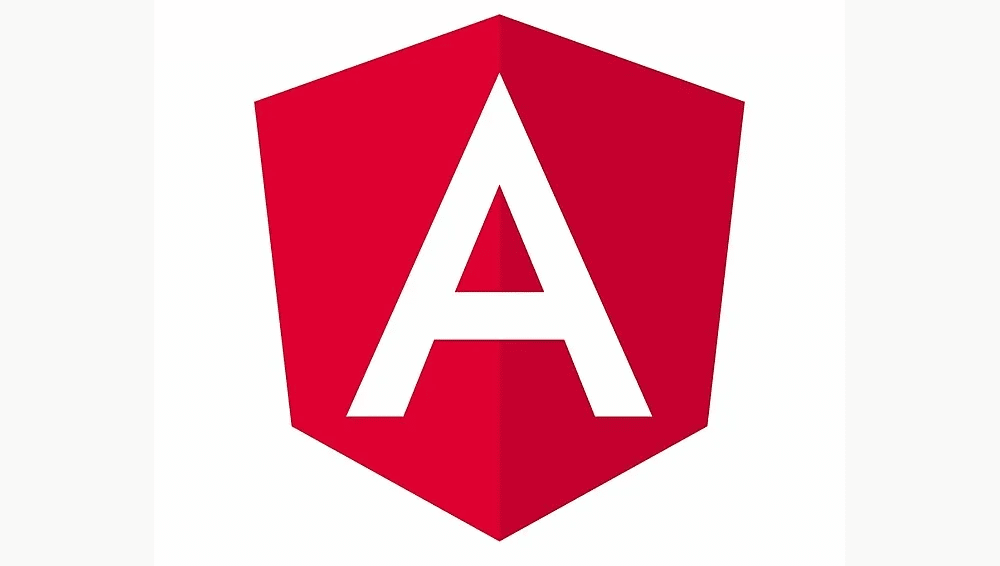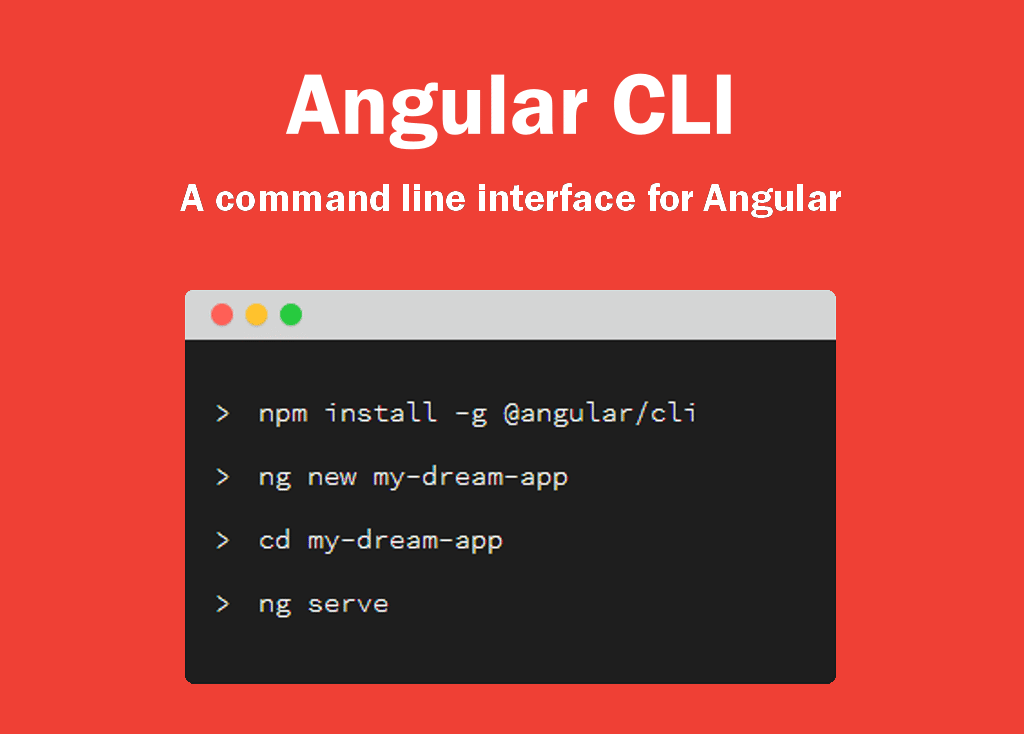Frameworks have grown substantially over the last decade, with some of them serving as game-changers. A common question that every project manager or any other project leader has before initiating the project is, “What technology must I deal with next?”
In this article, we’ll present a fair comparison of two robust JavaScript frameworks, Angular vs Vue, for developers.
What Is Angular?

Angular is an HTML and TypeScript-based platform and architecture for creating single-page applications. TypeScript is used to write Angular. It provides fundamental and additional functionality as a set of TypeScript libraries that you load into your apps. Furthermore, it allows users to construct huge applications that are easily manageable.
History
Angular was known as AngularJS when Google first launched it in 2010. It started as a side project for Miko Hevery, a senior Google developer. The initial objective of the project was to make web application development easier by implementing a few small changes.
It was introduced as an open-source project, like other Google projects. Over time, the efforts of many developers who used this new framework kept making it better and more helpful for various web projects.
This cohort of developers eventually created Angular 2.0, which has many new features and elements in addition to the existing benefits of AngularJS. This new version of Angular was created from the ground up to eliminate many limitations and flaws of the old AngularJS.
Popular Web Applications Built With Angular
As soon as Angular was introduced, a lot of companies started using it for their applications.
Due to its faster end to end app development, and support for larger and smaller applications alike, the following companies have been using it for a long time:
- Gmail
- Microsoft Xbox
- Forbes
- Paypal
- Deutsche Bank
- WikiWand
- UpWork
- The Guardian
- Weather.com
- Microsoft Office
- Mixer
- Jet Blue
What Is Vue?

Web frameworks can be backend or frontend. Vue is a JavaScript framework that provides powerful web tools for constructing modern frontend web projects. It is also recognized as a dynamic and progressive JavaScript framework as it enables progressive UI by enabling modification of the application code without impacting any essential functionality. The considerable flexibility of Vue enables adding custom modules and visual components to the web application.
History
Vue was created by Evan You after working with Google on many AngularJS-based projects. “I realized, what if I could simply take the bit of Angular that I loved and make something really lightweight,” he later recounted his thought process.
Vue was released in February of the following year, after the initial source code commit of the project in July 2013.
Popular Web Applications Built With Vue
As Even You said, Vue is built with the idea of extracting the best features of Angular while making it lightweight. A lot of companies did show interest in this idea and started using Vue for building their applications.
- Teleo
- Phone Harbor: Virtual Phone Number Manager
- Gitlab
- Laravel Spark
- Habitica
- Leafplayer
- Font Awesome
- Grammarly
- Behance
- Adobe
Main Features of Angular
Angular provides some eye-catching features that are quite valuable in getting a business application up and running. Some of the top features of Angular are described below.
- MVC Architecture: MVC is an acronym for Model-View-Controller. The Model is in charge of the application data, while the View is in charge of displaying data. On the other hand, the controller serves as a link between the display and model levels. MVC architecture generally allows you to divide your app into sections and create code to connect them.
- Efficient Two-Way Data Binding: Angular leverages two-way binding, which makes data upkeep across levels much easier. It enables bidirectional data transfer between different components. It will also guarantee that the logic tiers and view components are constantly in sync without any additional effort. Angular helps you to accomplish it by utilizing the ngModel directive.
- Less Code Framework: Compared to other frontend technologies, Angular is indeed a low-code framework. Users don’t have to write any more code to connect the MVC levels. It also doesn’t require any unique code to examine manually. The directives are also separated from the application code. The combination of all these features automatically reduces the development time.
- Angular CLI (Command Line Interface): The Angular CLI reflects industry best practices for creating websites with unique built-in capabilities like SCSS support and routing. Furthermore, the standard Angular CLI, like the
ng-neworng-add, makes it simple for programmers to find fully prepared features.

- CDK and Angular material: As a leading frontend language, Angular has been enhancing its Component Development Kit (CDK) with version updates. The current version of the Angular CDK includes capabilities like refreshing and virtual scrolling. It aids in the continuous loading and unloading of the DOM, which helps create a massive list of high-performing information. Both the ScrollingModule and DragDropModule can be imported into the application.
- Virtual scrolling: Angular Virtual Scrolling makes it easier for the code to respond to different scroll events. Virtual scrolling allows for excellent item simulation in addition to loading and unloading exposed DOM elements.
- TypeScript: TypeScript was a very popular frontend programming language in 2019. It effectively detects problems, which cuts down on development time. Moreover, TypeScript automatically fills up the root file configuration for quick compilation. It has more generics, enums, interfaces, hybrid types, access modifiers, union/intersection types, and other features than JavaScript.

Functional Typescript example. - Dependency Injection: The built-in dependency injection of Angular makes it easier for developers to create applications. It just queries about your dependencies. Simply say, ‘I require y’, and then it creates the same thing and gives it to you.
- Directives: Angular was the first to offer directives, and its accessibility has improved with each iteration. It also allows developers to extend the functionality of HTML components. These directives are the most effective in manipulating the functionality and data of DOM (Document Object Model) trees.
Main Features of Vue
Vue is a progressive JavaScript framework. Vue has many features, and there are many important things to know about Vue.js.
- Virtual DOM: Vue makes use of a virtual DOM. The virtual DOM component is basically a replica of the main DOM element available in the form of Js data structures and absorbs all DOM changes. Then the initial data structure is compared with the modifications introduced to the Js data structures. Only the final modifications that will be visible to viewers will appear in the real DOM. It is a unique solution that can be quickly implemented and cost-effective.
- Data Binding: This functionality uses a binding directive in Vue called v-bind. It allows users to edit or assign values to HTML properties, modify the format, and assign classes.
- CSS Transitions and Animations: This functionality provides numerous methods to perform a transition when HTML elements are introduced, changed, or deleted from the DOM. It comes with an in-built transition component that surrounds the item accountable for the return of the transition effect. Developers can also easily use third-party animation libraries to enhance the user experience.
- Template: As discussed previously, this feature provides HTML-based templates that connect the DOM to the Vue instance data. It converts the templates into Virtual DOM Render functions. Developers can use the template of a render function, while the render function can be used instead of the template.
- Computed Properties: Computed properties assist in listening to changes made to UI elements and performing the relevant logic, eliminating the need for further coding. We should use a calculated property if we want to mutate a parameter reliant on another variable being altered. Additional data properties heavily influence computed properties. Each and every change to the dependant properties will also cause the logic of the calculated property to be triggered. Since computed properties are cached depending on their dependencies, it will only run if one of those dependents changes.

Computed Properties example. - Watchers: Watchers are used on data that is likely to change frequently. A programmer does not need to perform any additional actions in this case. Watcher handles any data updates while still keeping the code simple and speedy. There are three basic approaches to exploiting the reactive nature of Vue components. These three types are Computed Properties, Methods, and Watchers. We use watchers whenever we wish to perform computation due to changes to a specific data attribute. This is the best option if you need to do an asynchronous or costly operation based on changing data.

Watchers example. - Methods: We use methods when we seek to change the state of a component or if an event that’s not necessarily connected to the instance data being changed occurs. Although methods accept arguments, they do not maintain track of any dependencies. It causes a distinction inside the component. Methods will be executed each time whenever the component is reloaded.
- Complexity: Vue is easier to use in regards to both API and design. It enables a web developer to develop simple applications in just one day.
- Flexibility and Modularity: It’s a modular, versatile substitute for it. You may utilize the Vue web-pack template if you don’t want to code every single component of the UI of the app. It allows you to connect to powerful features like hot module reloading, CSS extraction, linting, etc. Any third-party package can be added to vue.js with ease.
- Directives vs. Components: The roles of directives and components are distinguished in Vue by a reflective distinction. Components are self-contained entities with their own display and data logic, whereas Directives encapsulate DOM changes.
- Optimization: Vue keeps track of component dependencies while rendering. Consequently, the system recognizes which components need to be re-rendered whenever the form changes. Each component will be allowed to use shouldComponentUpdate to eliminate nested component errors.
Angular vs Vue: Similarities and Common Features
Vue is a JavaScript framework that is a child of the Angular frameworks. Thus, there’s no surprise that these frameworks have a lot in common.
Here are some similarities that can be found between these two frameworks:
- Templating
- Model Binding: Here, the syntax is similar, whereas only the attributes are different.
- Loops
- Conditionals: The code is similar except for the
ng-andv-prefixes. - Even Binding: Different event names in Angular include
ng-click,ng-mouseover,ng-mousedown, etc. There is only one event-binding property in Vue calledv-on. The name of the event appears within the string defining the binding.
Angular vs Vue: Which One Is Better?
Angular and Vue go hand in hand when it comes to different attributes and features. In this section, we will be giving a thorough comparison of some of the common features.
Popularity and Job Market
Angular has a significant community that has been expanding steadily since its initial release. It receives about 500,000 downloads each week and has over 70,000 stars on GitHub. In terms of work opportunities, Angular has a broader market. It’s much easier to become a web developer with Angular. Its simplicity enables you to design and manage huge, complicated web apps is why most major enterprises pick Angular.
In reality, we leverage the Angular framework for producing enterprise-level solutions as an Angular web development business. You’ll get a variety of solutions from different people due to the enormous popularity of Angular. You can also receive help from expert developers without lengthy tech support processes.
Vue is a rapidly expanding community. Even though it has quickly become a widely used framework, Vue still has a small market. So it will take a few years for Vue to provide sufficient job possibilities.
Vue is primarily focused on the open-source community. However, information sharing is currently limited in Angular.
Learning Curve
You’ll need to learn HTML, MVC, and Typescript to use the Angular frontend development framework to create an application. However, this is not the case with Vue.
Vue is simpler to use than Angular since it has built-in app templates and allows for more flexibility. Furthermore, it is easy to integrate Angular or React-based mobility solutions into the Vue platform as Vue.js was created by combining Angular and React.
Performance (Speed)
The level of performance in online and mobile application development is related directly to the DOM (Document Object Model). Angular utilizes real DOM, which renders the entire web/app page even when a single component is changed.
On the other hand, Vue.js employs Virtual DOM, which only renders the real DOM upon the components that have been changed. This approach improves application performance, making Vue the JavaScript framework of choice over Angular.
Components and Extensibility
Angular offers a much more clearly defined app architecture. It is very useful when working on huge applications. Many large-scale enterprises use angular over other frameworks as it provides a common architecture for all developers.
Vue isn’t overly structured, which offers developers a lot of flexibility. It offers official support for a wide number of build methods, allowing you to customize your application as you wish. There is no one-size-fits-all approach to app design. You can use an HTML or JavaScript file to create your templates.
State Management
Angular handles everything itself and has the majority of features built-in without the need for external resources. Yet nothing beats the NgRx store when it comes to streamlining the procedure in a large-scale project with a precise map. Reactive state management for Angular programs is provided by NgRx, a collection of Angular libraries.
Vuex, a state management library by Vue, aids in developing and managing complicated apps, unlike other frameworks. This library aids in the storage and sharing of reactive data throughout the application without performance degradation. It is the most important factor to consider when choosing a JavaScript framework.
Ecosystem
The inner structure of the framework and its community helps developers understand its environment and utilize it best. The understanding of the specific framework and the ability to use it fluidly and professionally influence development speed.
Angular is maintained by a corporate team of specialists, whereas Vue has a committed team and an open-source community. Angular provides built-in solutions and more thorough documentation. Furthermore, this framework is older, with an extensive professional community.
The advantages of Vue include a large number of third-party add-ons and plugins, a lightweight architecture, and scalability with various technologies.
Security
Vue and Angular both have built-in defense features against specific vulnerabilities and harmful attacks. These features include HTML content filtering and attribute bindings for Vue. Angular performs a similar function to that of sanitization. It also prevents cross-site request forgery (XSRF), cross-site scripting, and cross-site script inclusion (XSSI).
However, it’s crucial to note that the security of the code is most often critical within the control of the programmer. The best method to safeguard your product and its consumers is to follow best practices such as timely framework updates; utilizing only trusted templates, APIs, and plugins; and sanitizing and adhering to security documentation.
Testing and Debugging
Angular is a better option than Vue when it comes to testing. It has an excellent testing methodology and provides many tools, such as Jasmine and Karma, which test the entire development code individually.
On the other hand, Vue lacks proper testing rules, making it difficult for developers to provide a bug-free application. When it comes to performance testing, you can find a lot of performance testing tools for applications built with any of these framewroks.
Support and Community
Unlike Angular, which is supported by Google, Vue is entirely driven by an open-source community. As a result, it trails Angular and many other frameworks regarding commits and collaborators despite having a higher number of stars, watchers, and forks on GitHub.
Furthermore, the Vue migration aid tool is ineffective for large-scale applications due to the lack of a plan that focuses on constantly updating their plans. All of these indicators show that Angular outperforms Vue in terms of community support.
Drawbacks of Angular vs Vue
As the famous saying goes, every good thing has its own drawbacks. Both these frameworks have their own drawbacks as well. Based on these, the user may decide whether it’s the most appropriate framework to use.
The biggest drawbacks of Angular include:
- Limited options for search engine crawlers
- Steep learning curve
- Too many available versions, complicating migration
- Too sophisticated and verbose for small applications
- Tightly coupled with either JavaScript or TypeScript
- Two-way binding that can cause performance tradeoffs, especially in old devices
- Challenging-to-learn component-based architecture
- Decreasing popularity due to the emergence of new frameworks
As you can see from the above list, Angular has a steep learning curve. More importantly, Angular is not ideal for small applications, especially with the arrival of new frameworks. Also, Angular is facing a decrease in popularity due to the new frameworks such as Vue.
The biggest drawbacks of Vue include:
- Limitations to usefulness of community
- Lack of scalability
- Plugins are scarce
- Deficit of highly qualified professionals
- Problems with mobile support
- Difficult two-way binding
- Excessive flexibility in code
The main drawback of Vue is that it doesn’t have many resources to learn from since it’s still emerging. However, we can also predict that these drawbacks will get resolved with time since Vue is still an emerging framework, and there is much chance for improvement.
Summary
Both frameworks have their advantages. Angular is sturdy and tried-and-tested, whereas Vue is simple and fast. However, the framework or library your business needs depends entirely on your requirements and the goal of your application.
Which framework — Angular vs Vue — are you planning to use for your next project, and why? Share your thoughts in the comments below.



Leave a Reply